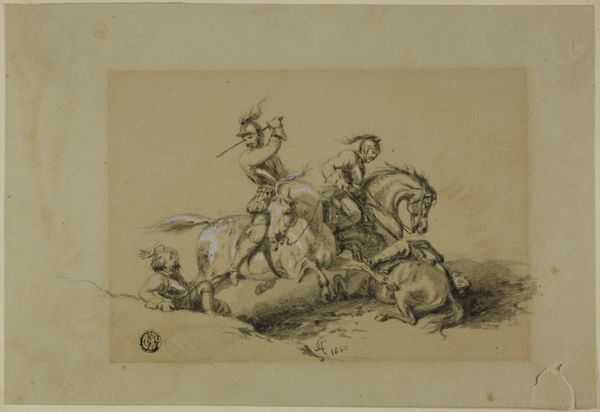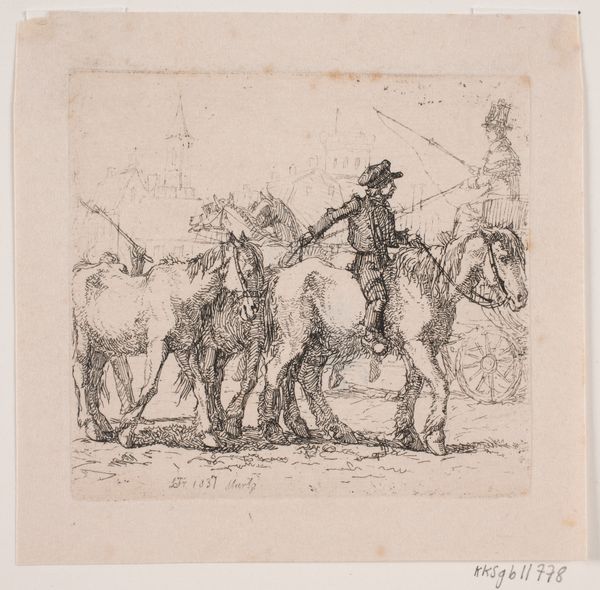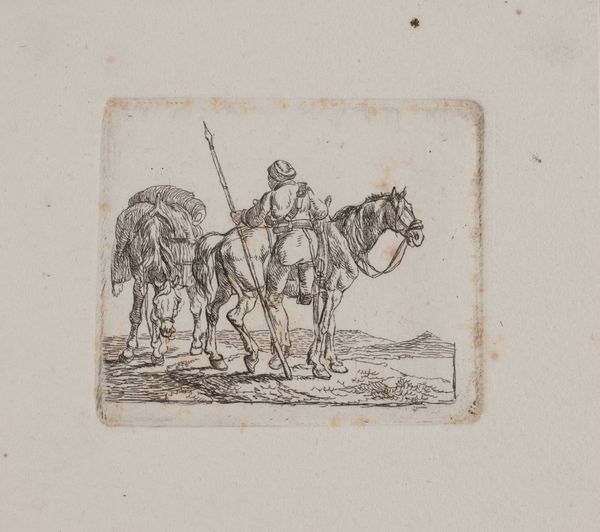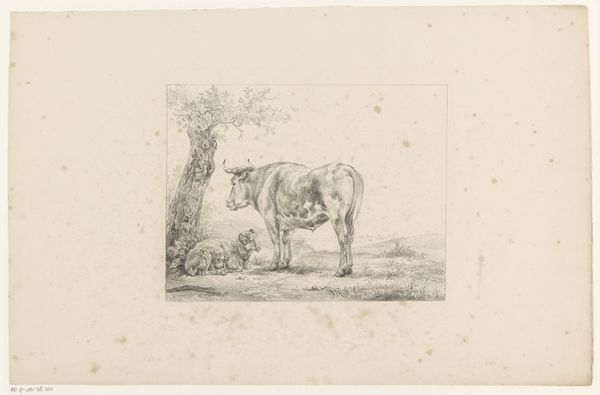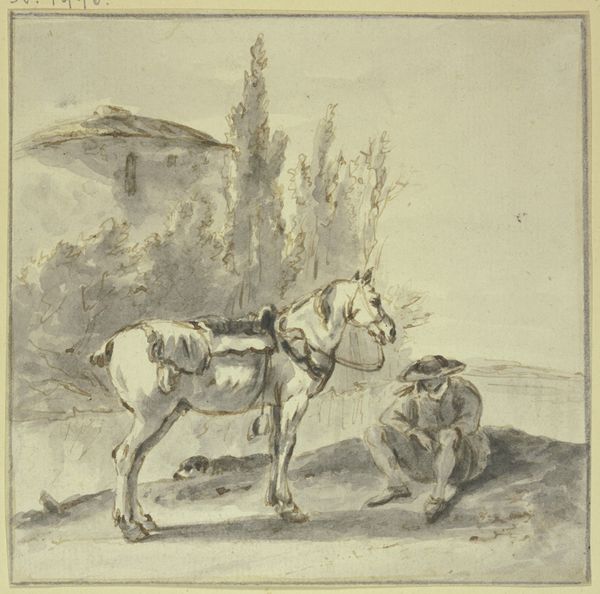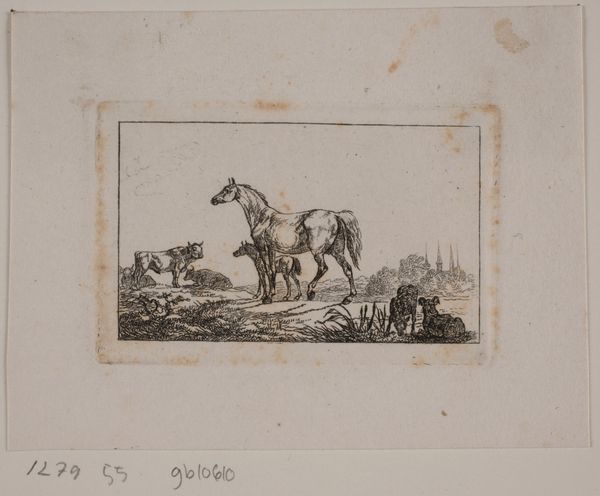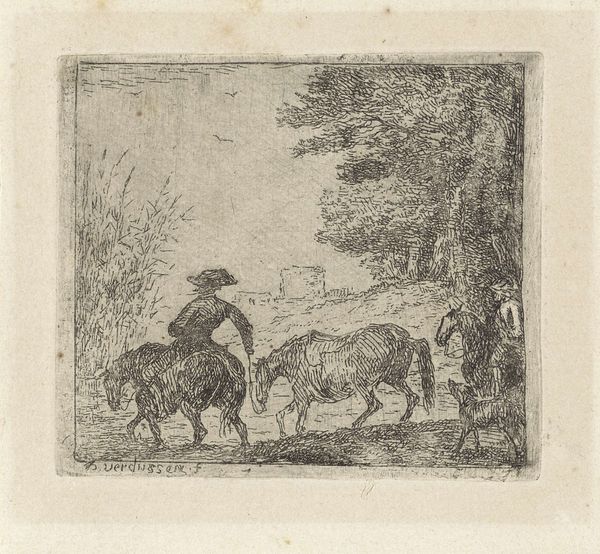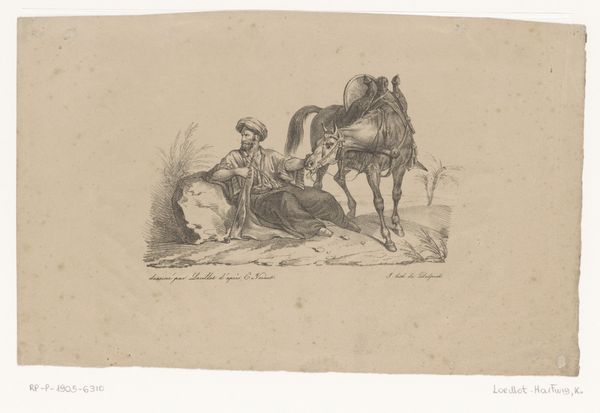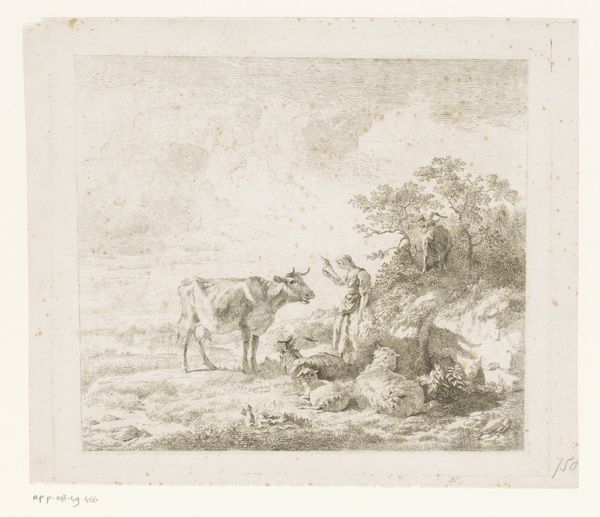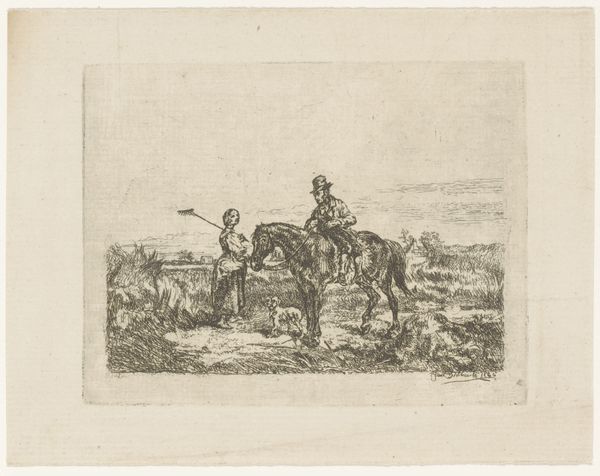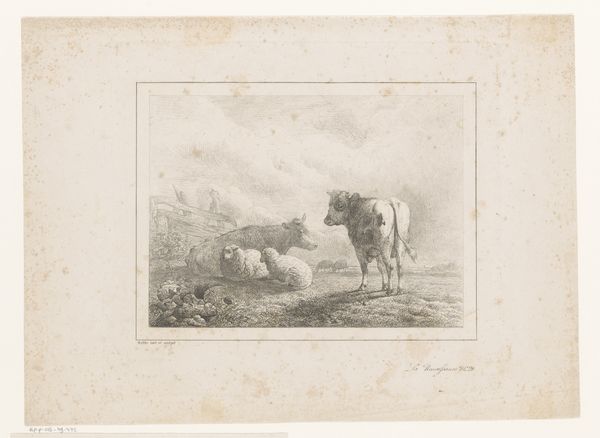
drawing, print, etching, engraving
#
drawing
# print
#
etching
#
landscape
#
figuration
#
romanticism
#
history-painting
#
engraving
Dimensions: 100 mm (height) x 110 mm (width) (bladmaal)
Editor: So, here we have "A Cossack Catching Horses" by Christian David Gebauer, an etching from 1813. It feels surprisingly energetic for such an old print. What jumps out at you about it? Curator: Immediately, it's the image of the Cossack—the figure becomes almost symbolic. What does a Cossack *mean* to the viewer? It suggests a certain ruggedness, freedom, and a connection to the land, values that would resonate deeply within the Romantic era. But notice the act of *catching* – is it a celebration of taming, or perhaps even of appropriating, something wild and free? Editor: That’s a great point! I hadn’t considered the taming aspect. The horses are so full of movement, contrasting with the Cossack’s seated pose. Curator: And the horse itself? Consider its historical weight, a signifier of status, power, and mobility. Look how Gebauer renders them. Do they appear truly "wild" or romanticized? This is also "history painting" so we have to ask, what collective memory does this reflect? What emotions might it evoke in its original audience, particularly in light of the Napoleonic Wars? Editor: It’s true, they're wild, but the scene feels controlled, somehow. Knowing it was made during the Napoleonic Wars definitely adds another layer. I was just looking at the scene as it is; now I am thinking what it represents. Curator: Exactly. And that tension is key. We have action frozen in time; raw power channeled through human agency. What stays with you after seeing this? Editor: The enduring power of symbols and how historical context really shapes their meaning for viewers of the time. I’ll never see a Cossack on horseback quite the same way again. Curator: Nor will I. It reminds me of how vital cultural memory is within an image, echoing through generations.
Comments
No comments
Be the first to comment and join the conversation on the ultimate creative platform.

